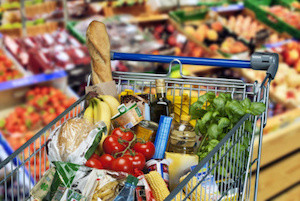 Food shopping can be an overwhelming experience. Not only are the options endless, so are the messages on packaging. Fat Free! Sugar Free! No artificial flavours! High Protein! 50% of your RDI! There is a barrage of information, but what are all the claims not telling consumers?
Food shopping can be an overwhelming experience. Not only are the options endless, so are the messages on packaging. Fat Free! Sugar Free! No artificial flavours! High Protein! 50% of your RDI! There is a barrage of information, but what are all the claims not telling consumers?
When selecting food where the packaging is emblazoned with such claims, ask yourself: if they have taken out the fat, sugar, salt or dairy (where is would normally occur), what has been added?
Recent research has found the majority of packaged food available in New Zealand supermarkets is ultra-processed and is also the unhealthiest food available. Dr Wilma Waterlander from the University of Auckland’s School of Population Health says the findings highlight the need to improve the supermarket food supply by reducing numbers of ultra-processed foods and reformulating products to improve their nutritional profile.
“The ultra-processed foods are less healthy than less processed foods,” says Dr Waterlander.
Time poor consumers may feel they get value for money by buying ultra processed food, but ultra-processed foods have the worst nutrient profile.
The study was recently published in the Journal Public Health Nutrition. The University of Auckland population nutrition researchers examined the availability of packaged food products in New Zealand supermarkets using this level of industrial processing, as well as the (NPSC), the price (energy, unit and serving costs) and the brand variety.
In four Auckland supermarkets, (in 2011 and 2013), the products were classified according to their level of industrial processing (eg. minimally, culinary and ultra-processed) and their Nutrient Profiling Score (NPSC).
The majority (84 percent in 2011 and 83 percent in 2013) of packaged foods were classified as ultra-processed, says Dr Waterlander.
If you are concerned about the amount of processed food you are eating, follow the ‘outside’ guideline at the supermarket; generally, the layout is such that fresh produce, fish, meat, chicken, and dairy are displayed around the walls of the supermarket. The aisles in the centre are where the processed food is displayed. Next time you shop, see how much of your trolley’s contents come from the outside, and which come from the aisles.
Even when you are shopping in the aisles, think carefully; tinned tomatoes, for example, are an excellent source of vitamins and nutrients. Their nutritional profile will drop however, the more extra ingredients are added. For every extra ingredient, there will likely be additional salt, sugar, and preservatives as well. Buy plain tinned tomatoes, and add your own fresh vegetables or herbs to give a depth of flavour and save yourself a serving of chemicals.
Choose food that would still be readily recognisable in nature. Potatoes for example, have vitamins, fibre and are a good staple food in their natural state. Once they have been, cooked, mashed, flavoured, shaped into uniform shapes and frozen, their nutritional profile will bear no resemblance to the original. The same goes for fish, chicken and the like. When did you ever see a fish fillet, fresh off a fishing boat, that was shaped like a goldfish?
Shop around the outside of your supermarket. Fresh food can appear expensive, but you will get far more value, and most importantly nutrition, than the single serving options in their shiny packages!









Stephanie - 9 years ago
there is a lot to be said for growing your own as much as possible-you know what goes into what you eat then!